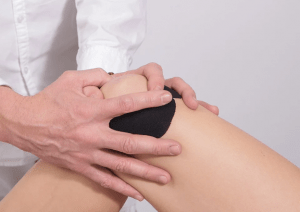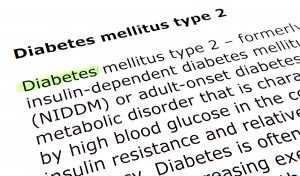Recent news and updates
Guest Blog: Why Seniors Need To Hire An Elder Law Attorney
Given the rather complex legal concerns that the elderly have to face, seniors or those who are helping them make decisions should work hand-in-hand with an elder law attorney.
Seniors have rather unique legal needs, and elder law attorneys use their expertise in the different fields of law that elder law encompasses to serve those needs.
Let’s take a closer look at some of the reasons seniors need the services of a lawyer who specializes in elder law.
Help With Medicaid
Seniors are going to need long-term care, and Medicaid is at the forefront of providing them with the necessary funding for it. However, Medicaid’s rules and regulations for eligibility can get rather complex.
By applying legal strategies properly, an elder law attorney can help seniors navigate those complexities and get the Medicaid coverage they need and deserve, and protect their money, property, or income at the same time.
Estate Planning
The elderly will also require assistance with their estate planning.
Many seniors have yet to create wills, trusts, and powers of attorney. Others simply need to update and maintain their existing estate planning documents.
Elder law attorneys can help seniors with their estate planning to ensure that their assets are legally passed down without complication, and their wishes carried out to the letter.
Planning For Long-Term Care
It is a fact that health complications will eventually arise as people get older. For seniors, there is no better time to plan for long-term care than now, while they are still able to care for themselves.
Seniors will need to draft an advance health care directive, a document where they can specify the actions they want to be taken for their health in case they become incapacitated. They also need to plan for guardianship, so when they are no longer capable of caring for themselves, they can ensure that the court will appoint a guardian of their choosing. These are a couple of concerns that a skilled and experienced elder law attorney can help plan.
With an elder care attorney providing insight and expertise, seniors will be able to make sound legal decisions that will ensure that their future needs will be taken care of and help them get some much-needed peace of mind.
About the Author
Lauren Summers is the Content Marketing Strategist for Miller, Miller & Canby, one of the most respected law firms in Montgomery County, and the Washington, DC metropolitan area. The firm focuses on five core areas of practice: Land Development, Real Estate, Litigation, Business and Tax, and Trusts and Estates Law. In her spare time, she reads books and plays board games with her husband and two kids.
Guest Blog: Ways to Age-Proof Your Knees
You spend several hours of the day running to and fro to get tasks done. And perhaps you spend the other hours checking off your to-do list behind a computer screen. The question is, do you see yourself being able to do this with the same tenacity and fervor five, 10, 20, or even 30 years from now?
The reality is, knee pain impacts about 31 million people in the United States, often due to osteoarthritis. And the older you get, the greater your chances of developing knee issues, due to changes in your gait and posture. Fortunately, you can take steps today to start age-proofing your knees.
Here’s a look at a couple of ways to keep your knees feeling young and ready to move in the years and decades ahead.
Watch Your Body
One of the most important steps you can take to age-proof your knees is to pay close attention to your posture. Poor posture can shift your body weight off-center and forward. Compensating for this shift places extra weight on the knees.
By practicing good posture, you distribute your weight properly and remove the extra load from your knees. You can achieve excellent posture by sitting up with the shoulders back and the back straight.
Take Advantage of Knee Braces
Another way to age-proof your knees is to wear a knee brace. A well-designed brace will provide you with relief from soreness, weakness, or instability in your knees by providing your knees with extra support. A brace can also help to relieve the irritations and minor swelling tied to arthritic conditions.
Improve Your Knee Health with Confidence Today!
If you struggle with discomfort in your knees in the future, this can understandably take a toll on your physical mobility and, in turn, your mental health and overall quality of life. Although pain medication, such as anti-inflammatory medication, or a total knee replacement may help to address your problem, you can prevent your knees from getting to that point in the first place.
Age-proofing your knees doesn’t have to be complicated. Tap into the benefits of knee braces and paying closer attention to your posture to protect your knees’ health. Your future knees will thank you.
Guest Blog: How senior citizens can cope with diabetes
Diabetes is a condition that affects how the body uses glucose (sugar), the main source of energy. People with diabetes either do not produce enough insulin (Type 1), or their body does not respond properly to insulin (Type 2). The most common types of diabetes are Type 2 and gestational diabetes, which affects women during pregnancy.
As you age, your body does not respond as well to diabetes medicine. You may find that your blood sugar is harder to control. Sometimes low blood sugar is a problem too because seniors tend to be less active than younger people so they don’t use up all their stored glucose or “sugar.” If you have trouble eating or drinking because of illness or other problems, ask your doctor if you should use a pump with insulin or pills instead of shots every day.”
As you age, your body does not respond as well to diabetes medicine.
As you age, your body does not respond as well to diabetes medicine. There are several reasons for this. The most common is that your kidneys are less efficient at processing the medicine, which can result in higher blood sugar levels than intended.
Another reason could be that there is a change in how well your liver processes the medication. In some cases, it may be necessary to adjust how often or how much you take each day in order for it to work effectively and keep your blood sugar under control.
You may find that your blood sugar is harder to control.
As you age, it’s likely that your body will respond less effectively to insulin. This means that your blood sugar may be harder to control.
You might also find that it’s more difficult for you to recognize the symptoms of low or high blood sugar (hypoglycemia). If these symptoms aren’t treated quickly enough, they could lead to serious complications such as seizures or even death.
If these things happen often enough, or if they cause a lot of discomfort or pain in addition to affecting how well your body works overall (for example: feeling confused), then it might be time for an adjustment in medication or weight loss plan for diabetes so that everything runs smoothly again!
Sometimes low blood sugar is a problem.
Low blood sugar (hypoglycemia) is a problem that can occur if you have diabetes. It happens when your body doesn’t have enough sugar to meet its needs, so it sends signals to your brain that you need more of it.
These symptoms may occur:
- Sweating or shakiness
- Dizziness, weakness and fatigue
If you feel these symptoms, eat something sweet like juice or candy right away! It’s important not to ignore these warning signs because they could lead to unconsciousness if ignored for too long.
If you have trouble eating or drinking because of illness or other problems, ask your doctor if you should use a pump with insulin or pills.
If you have trouble eating or drinking because of illness or other problems, ask your doctor if you should use a pump with insulin or pills.
If you are having trouble eating or drinking because of illness or other problems, ask your doctor if you should use a pump with insulin or pills.
Take your diabetes medications as prescribed.
It’s important to take your diabetes medications as prescribed. If you don’t, it can be dangerous for several reasons:
- Your blood sugar could go up or down, which can make you feel sick and tired.
- You might get infections because of poor circulation caused by high or low blood sugar levels.
- If a diabetic gets sick with an illness such as the flu or pneumonia, it may be harder for them to recover because their immune system isn’t working properly due to high or low blood sugar levels that aren’t being properly controlled by medication (or lack thereof).
Eat a healthy diet.
You should also eat a healthy diet. Your doctor can tell you what types of food are best for your diabetes.
- Eat plenty of vegetables, fruits, whole grains and beans. These foods are low in fat and sugar and high in fiber, which helps keep you full longer so that it’s easier to control how much food you eat at each mealtime. They also contain important vitamins and minerals that help control blood sugar levels in the body. Examples include:
- Fruit such as apples or oranges; vegetables such as carrots or broccoli; whole grains such as whole wheat breads/cereals (not white bread), oatmeal (not instant packets), brown rice
Work with your doctor to make exercise a regular part of your routine.
Exercise is important for senior citizens, who are more likely to have heart disease or diabetes than younger people. Exercise can lower blood sugar levels and help you live longer.
If you have diabetes, your doctor will recommend that you exercise at least 3 times per week for 30 minutes or more each time. Try to exercise at the same time every day so that it becomes part of your routine–for example, before breakfast or after dinner every evening (or both).
Exercise can be a social activity that brings people together in ways other than just talking about their health problems!
Get tested for high blood sugar if you are experiencing symptoms, such as fatigue and frequent urination.
- Symptoms of high blood sugar
- How to test for high blood sugar
- Frequency of testing
If you are experiencing any of the following symptoms, get tested for high blood sugar:
- Fatigue and frequent urination are common signs of diabetes. If you have these symptoms, talk to your doctor about getting tested for diabetes.
If you have questions about your diabetes or treatment, talk with your doctor or pharmacist.
- Don’t be afraid to ask questions. If you are unsure about your diabetes or treatment, talk with your doctor or pharmacist.
- Don’t be afraid to discuss symptoms with family members and friends. They may be able to help you recognize early signs of problems that could lead to a serious illness or injury if left untreated.
- Ask for a copy of the results from all tests done during your visit so that they can be reviewed at home by someone who knows how they should look (e.g., doctor).
Senior citizens living with diabetes can lead productive lives if they manage their health properly.
The good news is that there are many ways to manage diabetes as you age, and these strategies can make it easier for seniors to live a full life.
Many seniors find that using insulin pumps or other forms of continuous infusion provides better control than multiple daily injections. Others may benefit from new devices such as closed-loop systems that automatically adjust dosing based on the glucose level in their blood at any given time. These technologies can help prevent dangerous fluctuations in blood sugar levels while also reducing stress on joints and muscles caused by frequent needle sticks.
It’s important to talk with your doctor about what will work best for you–and then stick with whatever plan they recommend!
Don’t let diabetes get in the way of enjoying your retirement!
Don’t let diabetes get in the way of enjoying your retirement!
You can still travel, eat out and exercise. You can do everything you always did and live a long, healthy life.
Conclusion
In conclusion, we hope that you have found this article helpful. Diabetes is a serious condition that can be managed with proper care and treatment. If you are concerned about your own health or the health of someone in your family, make sure to contact a medical professional as soon as possible!
Cold Weather and Arthritis | 5 Tips for Preventing Pain

Are painful arthritis flare-ups keeping you from doing the things you enjoy during the winter? Unfortunately, cold, damp weather and inactivity can both contribute to joint stiffness and discomfort. If this sounds all too familiar to you, don’t miss these quick tips for preventing arthritis pain in cold weather:
Keep Moving
While it might seem more pertinent to hunker down under a warm blanket at home during cold days, it is widely known that physical activity plays a key role in keeping joints loose and mobilized. Find a way to exercise each day, even if it’s just for 15 minutes at a time. Try going for a walk, practicing yoga, swimming, biking, or even simply exercising at home with a stability ball and resistance bands.
Wear Layers
Heavy winter clothes may feel great at first, but they can quickly increase your body temperature and actually leave you sweating underneath them. When that moisture on your body mixes with cool air, you have a recipe for freezing and making your joint pain worse. Opt instead to wear multiple light, breathable layers of clothing when heading out on cold days and always cover vulnerable joints with gloves and other accessories to keep them warm.
Update Your Arthritis Toolbox
Invest in basic tools that simplify daily tasks that can become more difficult during arthritis flare-ups. For example, a soft, wide handle grip that you slide over utensils like a fork or toothbrush can make it easier to eat and brush your teeth when your hands are sore and stiff. Tools like jar openers, reacher grabbers, button hooks, and dressing sticks can help too.
Get a Massage
Massage therapy has long been touted as an effective method for managing arthritis symptoms and for good reason. Massage can loosen tight muscles that are constricting joint motion and it can boost blood circulation and trigger the brain to release feel-good hormones. You can turn the heat up on a professional massage too with warm oils, hot towels, and even hot stones.
Eat Warm Foods
Oftentimes the foods that are promoted to help relieve inflammation are also those that generate thermogenic (temperature increasing) properties in the body. Ginger, cayenne, and turmeric, for example, have been shown to help relax and expand blood vessels for improved blood flow that benefits arthritic joints. Try them in a warming winter tea or soup.





